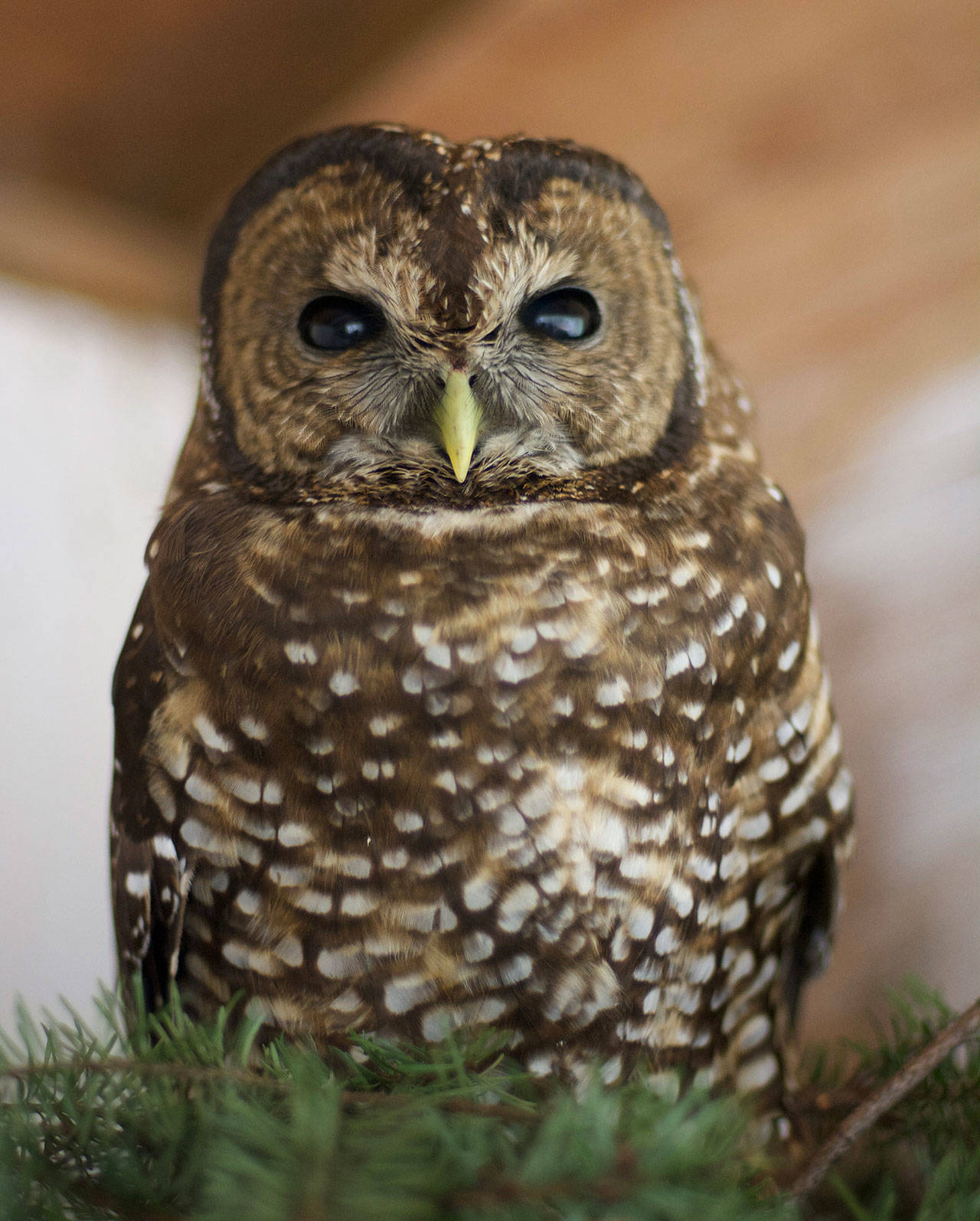For me personally, it began with the sad sight of a stately pileated woodpecker hopping around on our deck in a rather lopsided way.
Hanging high above her flamboyant red topknot was a bird feeder crammed with suet, left there just for her family.
Trouble was, the suet was now out of reach, as was access to nourishment of any kind, because this big hefty bird was grounded. One wing hung at an awkward angle. If a bird can’t fly, it can’t feed or evade predators.
This beautiful female had raised several generations of young on our property. (How often we’d watched a parent show its offspring how to pound away at tree bark to scare up insect edibles!)
Suddenly here was a neighbor in trouble. What to do?
Solution: tucked away in a Bainbridge Island forest lies a facility dedicated to healing injured animals and returning them to the wild. I made a quick call to the West Sound Wildlife Shelter and explained the problem.
“Bring the bird and we’ll check her out,” said the young lady. Bring the bird? Hmmmm. These woodpeckers have sharp beaks that can send tree bark flying. How do you capture one and avoid injury to human flesh? “Just approach slowly and toss a soft cloth over her. Then lift her gently into a small cardboard box, remove the cloth, and close the lid. We’ll be waiting for you.” Whew!
Eventual diagnosis: The wing was bruised, not broken. Three days later, with rest and treatment provided by trained rehabilitation specialists, our woodpecker was healed and no longer starving; she’s now home with her family.
The shelter’s rehab facility in the woods nurses quite a menagerie back to health, including squirrels, raccoons, eagles, herons, opossums, songbirds and much more.
Recently, a very rare patient arrived at the shelter, a bird so notable that it once made the cover of Time Magazine. The northern spotted owl just isn’t any owl. It’s a national symbol of habitat loss, especially in our Pacific Northwest. This owl subspecies thrives only in mature forests beneath dense old growth canopies. (In Kitsap, several other species of owls glide through our trees, but our old growth forests are all but gone, our state having lost 90 percent of this important habitat due to logging.)
The shelter’s X-ray of its distinguished feathered patient, originally rescued from a roadside near Sequim, revealed a poorly healed wing fracture. While treated at the shelter, the owl was fed a healthy diet, and her enclosure was gradually enlarged as her flying ability improved.
After passing flight conditioning tests, and proving able to catch mice on her own, all that remained was the search for a suitable place to release her. Federal and state Fish & Wildlife biologists found a perfect site near old growth forest on the Olympic Peninsula, and released the owl on March 30th. (To view a video of the banding and release, visit www.lwestsoundwildlife.org/video/NSO-release.mov.
Officially an endangered species, the northern spotted owl is in serious decline, in tandem with the loss of old growth forests. Today, only about 500 pairs of this species inhabit federal lands. So how do we humans balance economic momentum with leaving room for wildlife to thrive?
In the meantime, our neighboring Olympic Peninsula welcomes the return of an important resident, thanks to the shelter. Good luck, little owl — live long and prosper!
If you come across injured or orphaned wildlife, phone the West Sound Wildlife Shelter at 206-855-9057. The nonprofit shelter also offers nature education programs in Kitsap County, for all ages. Go to info@westsound wildlife.org.



